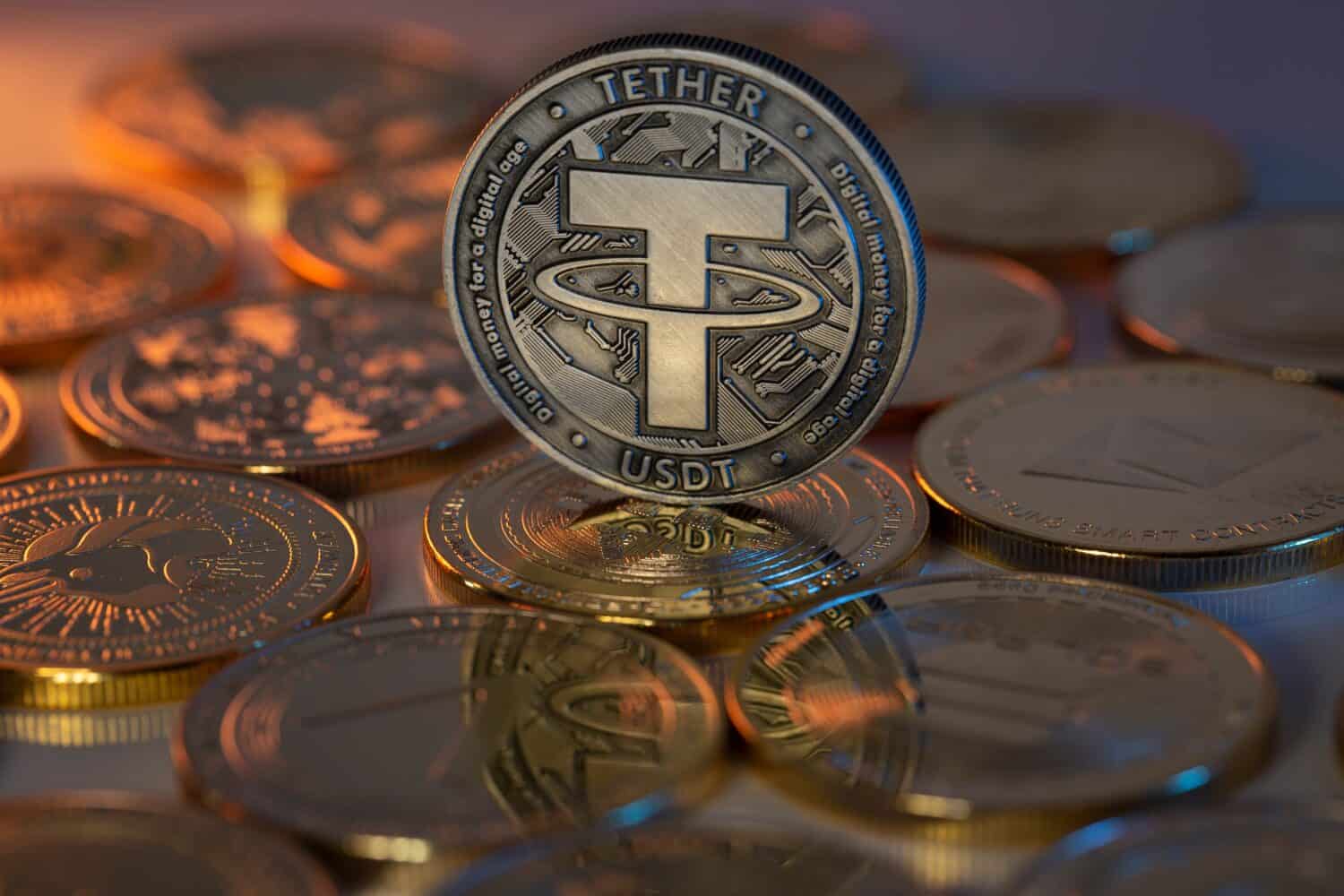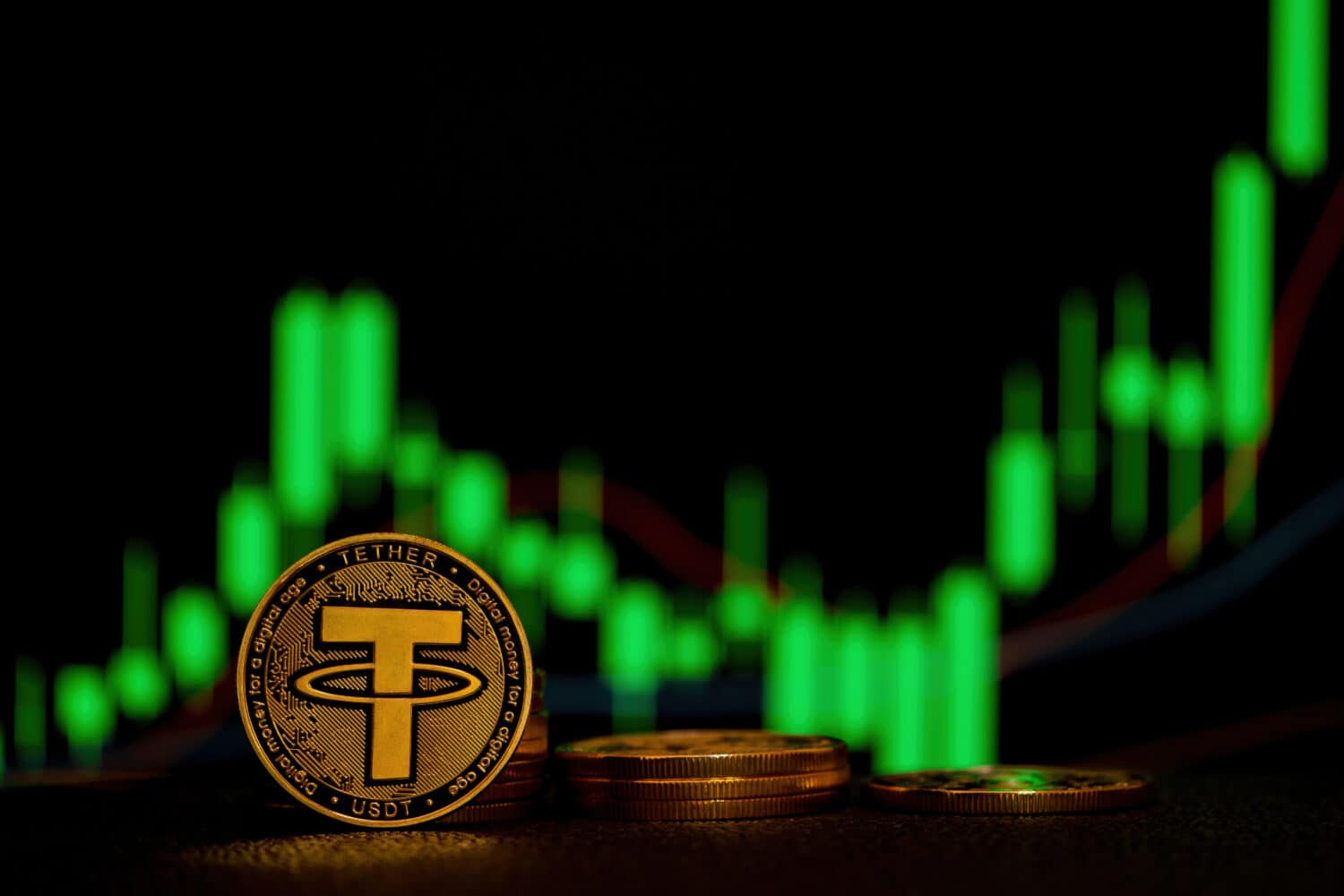
Tether (USDT) is a popular stablecoin in the crypto market. USDT is connected to the US Dollar and its strength has made it one of the investment choices with a high demand in the crypto market.
One of the problems faced in the cryptocurrency market is the ability to produce the prices of digital tokens, be it in a stablecoin like USDT. This article delves into three price prediction scenarios for USDT’s price in 2030 — the bear, bull, and base forecasts.
Understanding Tether (USDT) Price Movement in The Last Few Years

Tether came into existence in 2014, and within a short period, it became a major stablecoin in high demand. Tether expanded quickly in 2015 by having a representation on different blockchains like Ethereum and Litecoin Blockchain.
Tether remains a reliable solution for many cryptocurrency traders and exchanges because it fast-tracks transactions between exchanges without the issue of bank delay. This stablecoin is pegged to the US Dollar (1 USDT =$1) and remains unwavering as it makes it possible to navigate the fluctuating nature of the cryptocurrency market.
Today, USDT is available for easy access on various Blockchains like Algorand, Avalanche, EOS, Polygon, and Tezos. These characteristics of USDT have made it accessible to all users and businesses in the cryptocurrency industry.
Over the years, Tether progressed and grew rapidly as traders and investors started using it more for exchange and all sorts of cryptocurrency business transactions. This was achievable because stablecoin was increasingly in demand for trading activities and Tether was the best bet as it helps traders hold stable assets and also invest in the cryptocurrency market.
The table below offers explicit knowledge about USDT’s price movements in the last few years:
| Year | 2015 | 2016 | 2017 | 2018 | 2019 | 2020 | 2021 | 2022 | 2023 | 2024 |
| Price | $0.6051 | $1 | $1 | $1.0073 | $1.0513 | $1.002 | $1 | $1.005 | $0.9998 | $1 |
Tether (USDT) ranks at the #3 spot on CoinMarketCap, showcasing its continued dominance within the crypto ecosystem. While price unpredictability isn’t a major concern for USDT, the daily trading volume still sits at a staggering $88.03B, highlighting and showcasing its active use.
With a market capitalization of $101.24B and a circulating supply of 101.05B USDT, Tether remains a significant token, offering stability for several investors and businesses and facilitating various cryptocurrency transactions. USDT currently trades for $1 and is up 0.04% in the last 24 hours.
Factors Influencing Tether’s (USDT) Price in 2030

The price of USDT has been fixed to the dollar, but then different factors could influence its imminent course:
- Regulation and Legal Landscape: The supervisory accuracy encompassing stablecoins remains an issue that is still in progress. A rigid supervision may disorganize Tether’s operations or deteriorate investors’ confidence in USDT, which directly affects the price stability. Contrary to this, fair and supportive supervision could encourage and augment the demand for USDT.
- Request for Stablecoins: The general request for Stablecoins in the cryptocurrency market will have an important effect on the price of USDT. This implies that if the use of stablecoin for trading, hedging, and every other purpose increases steadily, the demand for USDT will also skyrocket.
- Prestige and Transparency: The prominence and dedication of Tether towards transparency play a very substantial role. For instance, paying attention to the concerns around the structure and autonomous analysis of its reserves could increase an investor’s trust in USDT.
Tether (USDT) 2030 Price Prediction: Bull, Bear, and Base

Looking towards 2030, USDT’s price could follow one of three paths. The bullish scenario, characterized by mass cryptocurrency adoption, favorable regulations, and increased transparency from Tether, might see USDT trade at $1.25.
However, a bearish scenario emerges if stringent regulations, the rise of algorithmic stablecoins, and a loss of trust come to fruition, potentially causing USDT to fall below $1 to $0.95. The base scenario positions USDT near its $1 peg, operating within a growing stablecoin market and adapting to evolving regulations.
Bull Case Prediction for Tether (USDT)
The bull case scenario for USDT in 2030 paints an optimistic picture, driven by several key factors:
-
- Mass Adoption of Cryptocurrency: If there is a mass acceptance of cryptocurrency across different areas, there will be a high demand for stablecoin like USDT in order to speed up transactions. This could in turn lead to an upsurge in the price of Tether.
- Favorable Regulatory Environment: if the Government can enforce fair and supportive supervisory regulations for stablecoins, this can lead to a more favorable environment for the growth and acceptance of USDT. This attracts more investors into the cryptocurrency market, leading to higher demand for USDT.
- Enhanced Transparency and Trust: Tether seeks to address issues that have to do with reserve composition and executes rigid independent audits. This brings about transparency and also strengthens trust in USDT which solidifies its place as a leading stablecoin.
- Partnership: In an attempt to encourage real-world acceptance of blockchain technology, Tether partnered with Lugano, a Swiss city, and the partnership pays attention to consolidating blockchain solutions within the local community demonstrating practicality. Partnerships like this can lead to an increase in global adoption of USDT.
The bullish scenario suggests that USDT could potentially trade at a slight premium above $1 to $1.25 by 2030. While a significant deviation from its peg is unlikely, increased demand and a supportive regulatory environment could nudge the price slightly higher.
Base Case Analysis for Tether (USDT)
The base case scenario for USDT in 2030 takes a more neutral approach, considering both potential growth opportunities and existing challenges:
- Stablecoin Market Growth: The general market for stablecoins progresses with USDT keeping up with its dominant position but then experiencing an increase in competition from neophytes. This scenario predicts that the price of USDT can remain close to its $1 peg, with some possibilities for little fluctuations based on demand and the condition of the Market.
- Evolving Regulations: If the Government adopts a calculated and measured approach towards regulating stablecoins, with the need to balance innovation with financial stability issues. Still, this scenario suggests ongoing discussions and possible adjustments to regulations and standardized procedures, potentially having an impact on USDT’s operations but not really causing a significant price deviation.
The base case scenario suggests that USDT will more likely remain within the range of its $1 peg by 2030.
Bear Case Analysis for Tether (USDT)
By 2030, our bear case scenario for USDT outlines possible challenges that may obstruct and intrude on its stability and price:
- Strict Regulations and Crackdowns: In a scenario where the governments implement rigid regulations and restrictions on stablecoins, this may hinder Tether’s operations, crush user’s confidence, and potentially cause a devaluation in the US dollar, leading to a price decline. Government regulations can either clarify issues about the financial stability of Tether or affect its price stability negatively.
- Rise of Algorithmic Stablecoins: Algorithmic stablecoins use algorithms to make their peg stable rather than being reliable on reserves to gain global acceptance. If these algorithmic stablecoins offer an irresistible alternative and also look into issues surrounding Tether’s reserves, they could attract and influence users away from USDT, potentially having an impact on its market share and price.
- Loss of Trust and Reputation: Altercations surrounding Tether’s reserves and lack of transparency could crumble users’ confidence. This lack of trust may lead to a decrease in demand for USDT and potentially impact and provoke a devaluation of the US dollar, leading to a severe drop in price.
In this scenario, the bear case suggests that USDT could trade between $0.95-$0.90 in 2030 if it suffers from a set of stringent government regulations, loses market share to other creative-minded competitors, or rather experiences a total deterioration of users’ trust.
Are You Still Paying With a Debit Card?
The average American spends $17,274 on debit cards a year, and it’s a HUGE mistake. First, debit cards don’t have the same fraud protections as credit cards. Once your money is gone, it’s gone. But more importantly you can actually get something back from this spending every time you swipe.
Issuers are handing out wild bonuses right now. With some you can earn up to 5% back on every purchase. That’s like getting a 5% discount on everything you buy!
Our top pick is kind of hard to imagine. Not only does it pay up to 5% back, it also includes a $200 cash back reward in the first six months, a 0% intro APR, and…. $0 annual fee. It’s quite literally free money for any one that uses a card regularly. Click here to learn more!
Flywheel Publishing has partnered with CardRatings to provide coverage of credit card products. Flywheel Publishing and CardRatings may receive a commission from card issuers.
Thank you for reading! Have some feedback for us?
Contact the 24/7 Wall St. editorial team.





